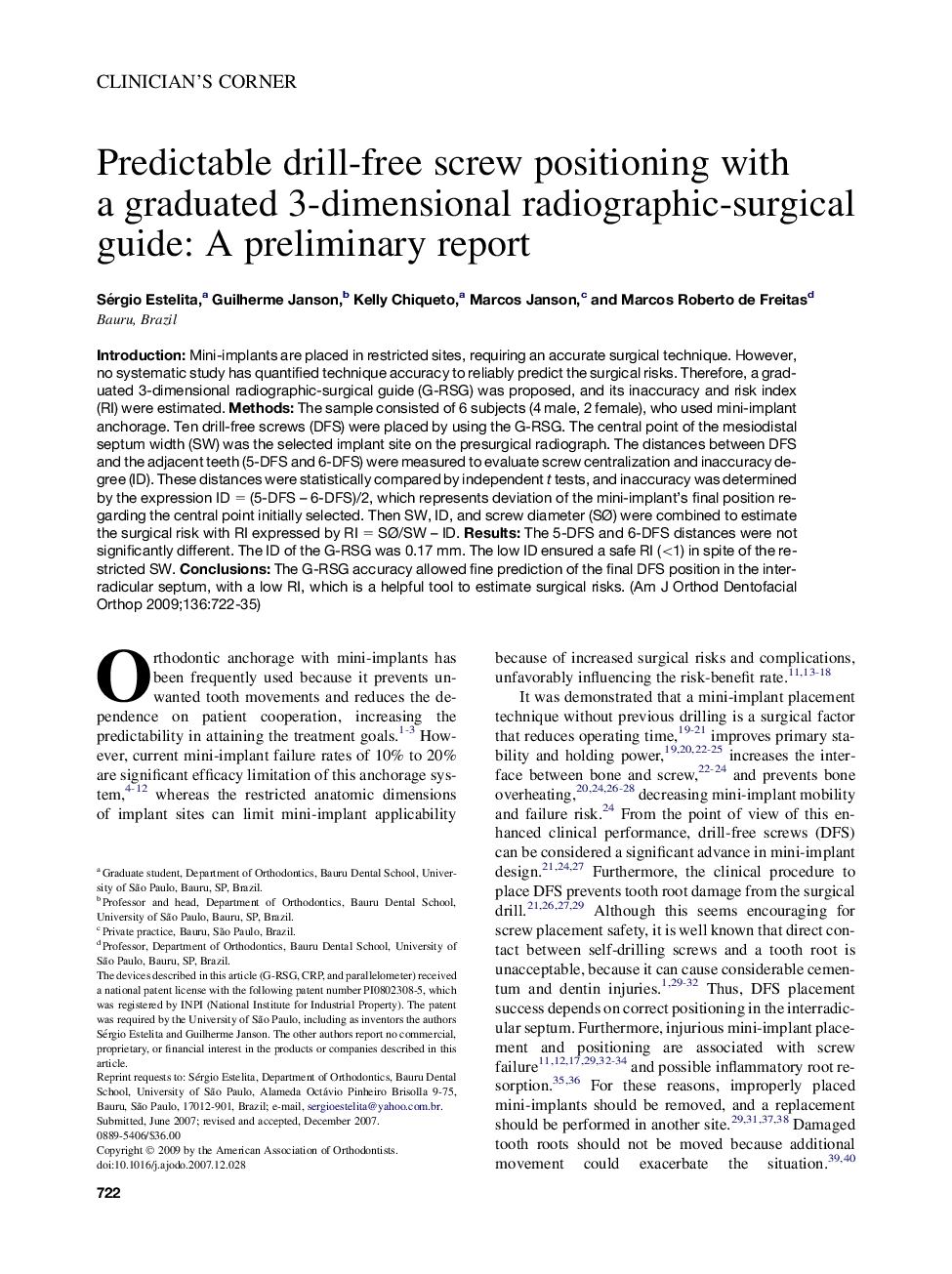| Article ID | Journal | Published Year | Pages | File Type |
|---|---|---|---|---|
| 3118053 | American Journal of Orthodontics and Dentofacial Orthopedics | 2009 | 14 Pages |
IntroductionMini-implants are placed in restricted sites, requiring an accurate surgical technique. However, no systematic study has quantified technique accuracy to reliably predict the surgical risks. Therefore, a graduated 3-dimensional radiographic-surgical guide (G-RSG) was proposed, and its inaccuracy and risk index (RI) were estimated.MethodsThe sample consisted of 6 subjects (4 male, 2 female), who used mini-implant anchorage. Ten drill-free screws (DFS) were placed by using the G-RSG. The central point of the mesiodistal septum width (SW) was the selected implant site on the presurgical radiograph. The distances between DFS and the adjacent teeth (5-DFS and 6-DFS) were measured to evaluate screw centralization and inaccuracy degree (ID). These distances were statistically compared by independent t tests, and inaccuracy was determined by the expression ID = (5-DFS – 6-DFS)/2, which represents deviation of the mini-implant's final position regarding the central point initially selected. Then SW, ID, and screw diameter (SØ) were combined to estimate the surgical risk with RI expressed by RI = SØ/SW – ID.ResultsThe 5-DFS and 6-DFS distances were not significantly different. The ID of the G-RSG was 0.17 mm. The low ID ensured a safe RI (<1) in spite of the restricted SW.ConclusionsThe G-RSG accuracy allowed fine prediction of the final DFS position in the interradicular septum, with a low RI, which is a helpful tool to estimate surgical risks.
